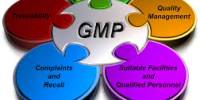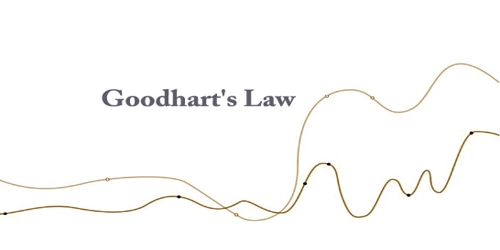Promotions are fact of life and a common currency in FMCG. Many would argue that consumers now have a basic expectation that much of what they buy, from groceries to lifestyle goods, will be subject to a promotional offer at some point or other. In the current economic downturn, the consumer expectation of valuable promotions has been increased as they expect retailers and manufacturers to share their pain. The current squeeze is a perfect storm of cost and demand drivers in a combination not seen before and it is causing consumers to consider affordability above all else in their purchasing decisions. Intense competition has driven the increased use of promotion mechanics over the last twenty years. Typically, in western economies, FMCG manufacturers have tended to invest around 15-25% of their total marketing budget in promotions. Recent history and current events suggests this spending will be seen to increase further, as consumption slows, in order to sustain sales levels.
Consumer expectation is further enforced by newer transactional vehicles, such as the internet, where additional discounts have been offered against high street store prices by vendors keen to increase sales volumes whilst reducing infrastructure and distribution costs. This combined with the provision of price comparison web sites by third parties such as mysupermarket.com and by retailers themselves (Tesco, Asda etc) further increases the marketers’ challenge from the well informed consumer customer. It is highly unlikely that we will see the demise of promotions in the foreseeable future. The whole philosophy is too deeply entrenched in the retailers’ competitive arsenal and the practice is likely to increase markedly, with the greater burden of the cost falling on the major brand manufacturers.
Driven by category competition, retailer and consumer pressure and the increasing popularity of own brand and budget lines, CPG manufacturers will need to drive even more innovative promotions to protect market share and brand value. By the same token, retailers will need to balance short term gains on volume sales on own brand and economy lines, against the longer term impact on the profitability to them of established brands. All of these challenges have to be addressed in an environment where many organizations have reacted to events by implementing restructuring and cost reduction activities, thus putting additional pressure on finite resources.
There are essentially two broad schools of thought in terms of the overall approach to measuring promotion effectiveness. Both have been revolutionized by the advent of bar code driven EPOS scanners. These may be termed the; “product push” approach And the “customer pull” approach .The most frequently deployed method of analysis, has been developed around a product sales based approach and is heavily used by all the major global CPG manufacturers. This “product push” methodology centers upon, as the name implies, a product/brand and the outcome of various interactions around it. This can cover everything thing from new product development and launch tracking through to product display, product placement, ranging, sales, promotions, cannibalization, propensity for switching, stock availability, store planning, in fact almost everything involved in the journey from factory to customers’ shopping bag.
Through many years of involvement with its clients, IRI has contributed to decisions made around the promotion of a brand or product, which draw on information extracted from data from a variety of processes. These inevitably incorporate both quantities and qualitative output. IRI EPOS data ultimately reveals the impact of changes to the baseline position of the product whilst our market research, in-store shopper insights, panel data and processes like footfall studies add further qualitative outputs to build a more complete picture. This approach has brought significant value to our CPG manufacturing clients who traditionally do not own andmanage a direct relationship with the end consumer customer. In order to continue to provide relevance and powerful insights, the major vendors of market information to manufacturers are continuing to develop new and innovative offerings around predictive analysis and “what If” scenario sand box services to reduce time lines and speed of response to the market.
A pact is an agreement or promise you make with others or, sometimes, yourself. Usually made to help solve a problem or reach a goal, a pact can be a legally binding document or just something you scribble on a piece of paper. Some pacts are as short as a few sentences, while others are many pages long. Written pacts should be worded carefully because whatever is agreed to is a promise that must be kept.
Instructions
- Use simple but precise language and avoid complicated legal terms that need too much explanation. If a pact is easy to understand, the parties are more likely to keep to it.
- State who will be responsible for specific tasks and what they are expected to do to achieve their goals. Write down what is acceptable and what will cause the pact to fail.
- Include a time line for items to be acted upon and a deadline for the pact’s goals to be satisfactorily fulfilled by all parties involved. Identify any actions that may have flexible time lines and include alternate deadlines.
- Include any potential expenses and specify which party will be expected to pay for them. Will you cover all expenses? Will your friend pay half? Who will be required to pay any unforeseen costs and how long will they be given to pay before the pact is declared null and void?
- Explain what happens if a dispute arises. Will one of the parties make the final decision?
Will someone else decide who has failed to follow the requirements of the pact? Is professional mediation a possibility? What happens in the event of expenses incurred from a dispute? When a dispute decision maker is identified in a written pact and that document has been signed, it is more difficult for a disgruntled party to object to the decision made.
- Add as much information as necessary to cover all foreseeable outcomes. For instance, if you are writing a pact with your friend promising you both will lose 20 pounds by a specific date, what happens if one of you gets sick?
- Define the expected results of the pact. Be precise. In most pacts or agreements there are several possible outcomes. Make sure the outcome you want is specifically written in the document and that all parties understand no other outcome fulfills the requirements of the pact.
















